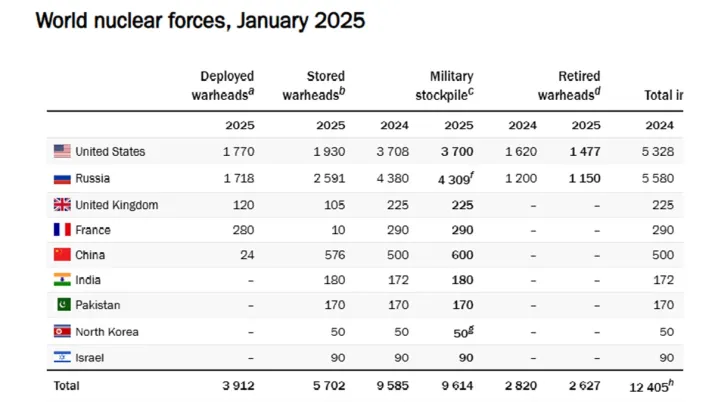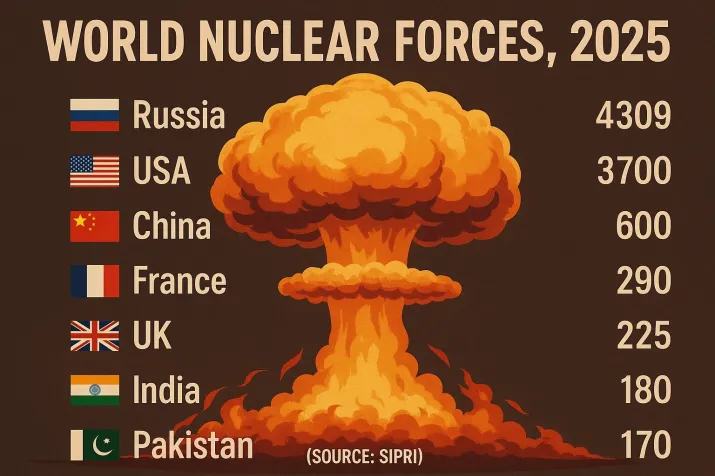New Delhi: The Stockholm International Peace Research Institute (SIPRI) in a new yearbook released on Monday said that India has more nuclear weapons than Pakistan, but Beijing’s strategic arsenal is bigger than India’s arsenal.
SIPRI also pegged the number of nuclear warheads in the Indian arsenal at 180 as of January 2025, compared to 172 a year earlier, while Pakistan is estimated to have 170 nuclear weapons, the same as last year. It added that China’s arsenal consisted of 600 nuclear warheads in January 2025, up from 500 last year.
As per the SIPRI report, India’s new ‘canisterised’ missiles, which allow warheads to be pre-mounted and transported more safely, could potentially carry nuclear warheads even during “peacetime”.
The report said these next-generation systems may also be able to deliver multiple warheads using a single missile in the near future.
“India is believed to have once again slightly expanded its nuclear arsenal in 2024 and continued to develop new types of nuclear delivery systems. India’s new ‘canisterized’ missiles, which can be transported with mated warheads, may be capable of carrying nuclear warheads during peacetime, and possibly even multiple warheads on each missile, once they become operational,” the SIPRI report said.
Among the newest of India’s next-generation delivery platforms are the Agni Prime (Agni-P) missile and the Multiple Independently Targetable Re-entry Vehicle (MIRV)-capable Agni-5 system.

The SIPRI report said that while Pakistan is estimated to have 170 nuclear weapons, China’s arsenal consisted of 600 nuclear warheads in January 2025, up from 500 last year.
SIPRI stated that China’s nuclear arsenal is growing faster than any other country’s, by about 100 new warheads a year since 2023.
“By January 2025, China had completed or was close to completing around 350 new ICBM silos in three large desert fields in the north of the country and three mountainous areas in the east. Depending on how it decides to structure its forces, China could potentially have at least as many ICBMs as either Russia or the USA by the turn of the decade. Yet even if China reaches the maximum projected number of 1,500 warheads by 2035, that will still amount to only about one third of each of the current Russian and US nuclear stockpiles,” the report said.

The SIPRI report said Russia and the USA together possess around 90 per cent of all nuclear weapons, and the sizes of their respective military stockpiles seem to have stayed relatively stable in 2024, but both states are implementing extensive modernisation programmes that could increase the size and diversity of their arsenals in the future.
“If no new agreement is reached to cap their stockpiles, the number of warheads they deploy on strategic missiles seems likely to increase after the bilateral 2010 Treaty on Measures for the Further Reduction and Limitation of Strategic Offensive Arms (New START) expires in February 2026,” the report added.
Referring to a recent India-Pakistan military conflict, SIPRI raised serious concerns about the risks of escalation during conventional conflicts between nuclear-armed neighbours. Associate
Senior Researcher with SIPRI’s Weapons of Mass Destruction Programme and Associate Director for the Nuclear Information Project at FAS, Matt Korda, warned: “The combination of strikes on nuclear-related military infrastructure and third-party disinformation risked turning a conventional conflict into a nuclear crisis.”






